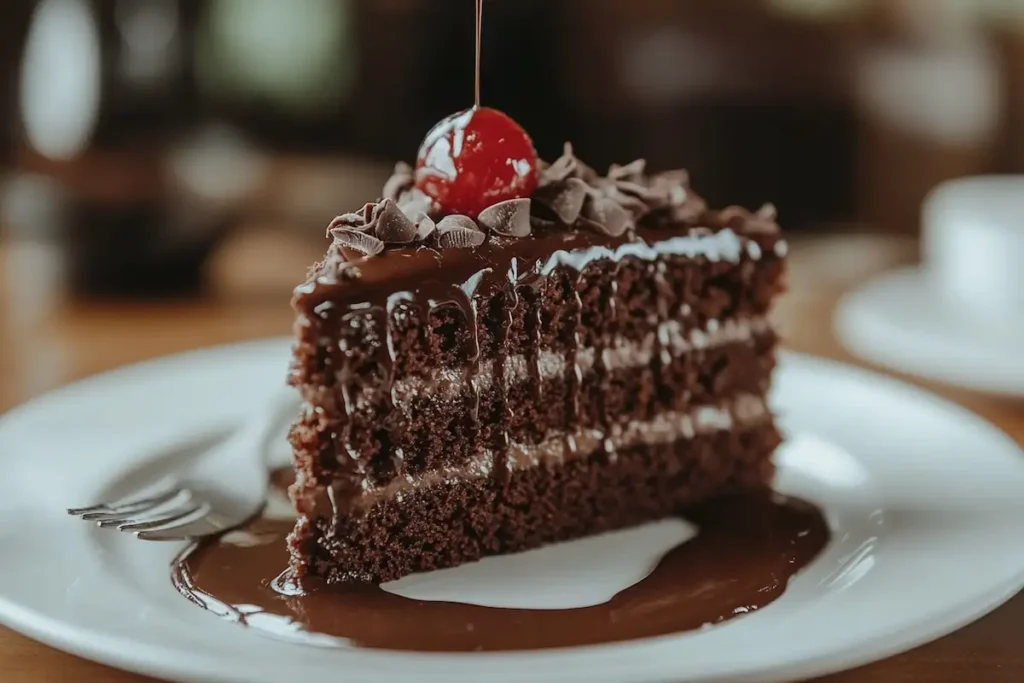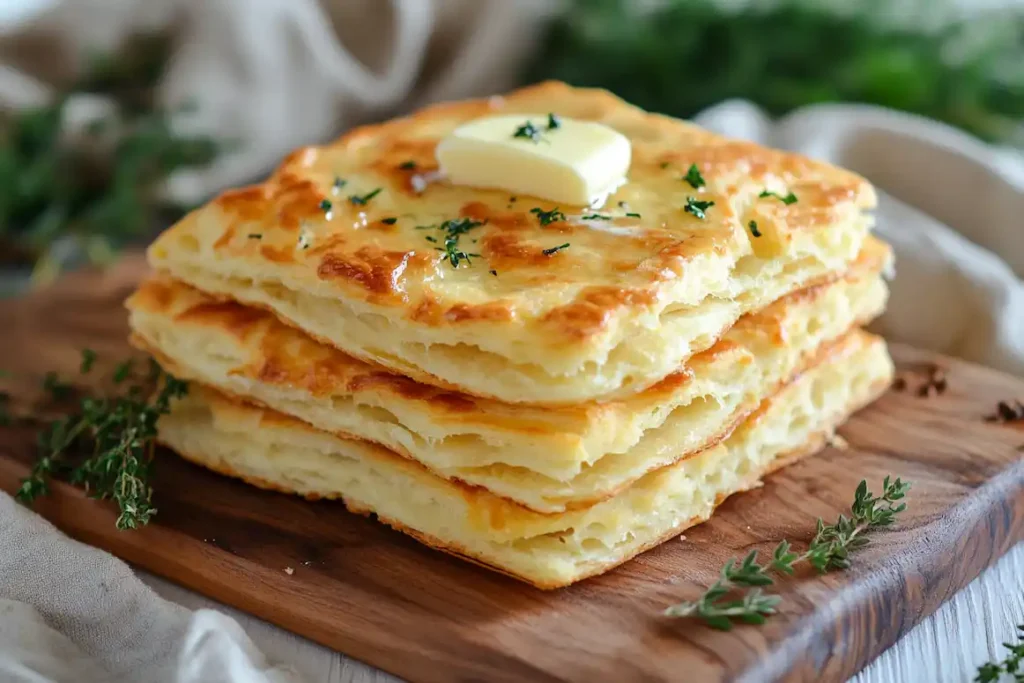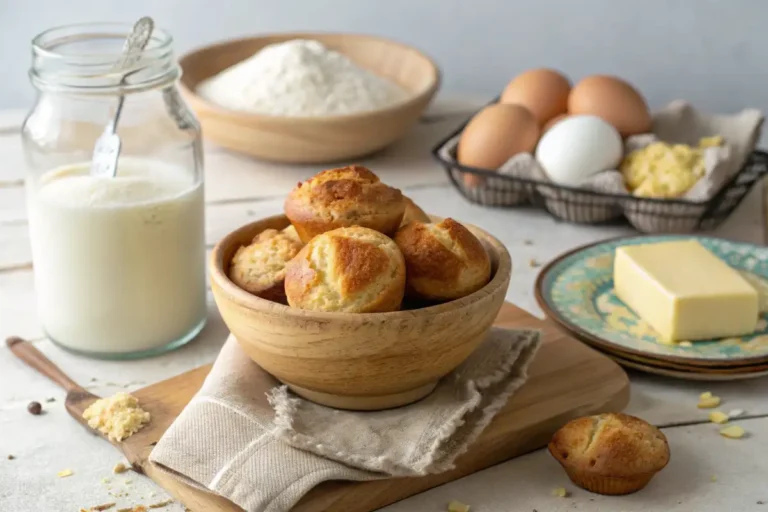Baking is a delightful science, and every ingredient plays a unique role in creating the perfect treat. But what if I told you that a simple, fermented drink like kefir could elevate your baking game? From making cakes fluffier to enhancing the tang in savory biscuits, kefir brings so much to the table. In this article, we’ll explore what kefir does in baking, its benefits, and how you can use it to transform your recipes. Along the way, we’ll uncover the science, techniques, and even some FAQs to make sure you’re equipped to bake with confidence.
Let’s dive into the first part and understand kefir’s role in baking!
1. Understanding Kefir and Its Role in Baking
What is Kefir?
Kefir is a fermented beverage made by combining kefir grains with milk or water. Unlike its name suggests, these grains aren’t actual grains like wheat or rice; they’re clusters of beneficial bacteria and yeast. During fermentation, these microorganisms break down sugars, producing a tangy, slightly fizzy drink.
There are two main types of kefir:
- Milk Kefir: Made using cow, goat, or sheep milk, this creamy and protein-rich version is perfect for baking.
- Water Kefir: A dairy-free alternative fermented from sugar water or fruit juice. Though less creamy, it works well in recipes requiring thinner liquids.
Whether you choose milk or water kefir, both add a distinct flavor and versatility to baked goods.
Nutritional Benefits of Kefir
Why should bakers care about kefir’s nutrition? Because it makes baking healthier without compromising taste.
- Probiotics: Although baking destroys most probiotics due to heat, kefir’s fermented base still enhances the flavor and texture of baked goods.
- Vitamins and Minerals: It’s packed with calcium, magnesium, and vitamin B12, making it a nutrient boost for your cakes and muffins.
- Protein-Rich: The proteins in kefir contribute to its ability to soften gluten strands, resulting in tender, moist treats.
- Low Lactose: The fermentation process reduces lactose levels, making it easier to digest for those sensitive to dairy.
Nutritional Content (per 100g)
| Nutrient | Amount | Daily Value (%) |
|---|---|---|
| Calories | 59 kcal | 3% |
| Protein | 3.3 g | 7% |
| Fat | 3.2 g | 5% |
| Carbohydrates | 4.0 g | 1% |
| Calcium | 120 mg | 12% |
| Vitamin B12 | 0.4 µg | 17% |
| Magnesium | 12 mg | 3% |
| Probiotics | Up to 30 strains | N/A |
This nutritional table highlights kefir’s richness in protein, calcium, and essential vitamins, making it a nutritious choice for bakers and health-conscious individuals alike. While baking destroys most probiotics, the other nutrients remain intact to provide value in every bite!
With kefir, you’re not just baking delicious treats—you’re adding health benefits that elevate your recipes beyond the ordinary.
2. The Science Behind Kefir in Baking
How Kefir Acts as a Leavening Agent
When baking, achieving a light and airy texture often feels like magic. But it’s actually science—and kefir plays a leading role. Thanks to its natural acidity, kefir reacts with baking soda to create carbon dioxide bubbles. These tiny gas pockets expand in the oven, giving your baked goods a beautiful rise and a soft, fluffy texture.
Compared to buttermilk or yogurt, kefir’s acidity is unique. Its tangy profile complements recipes like muffins, pancakes, and quick breads while adding a slightly fermented aroma that makes your treats stand out. For the best results, always use fresh, room-temperature kefir. It enhances the reaction with leavening agents, ensuring your cakes or breads puff up perfectly.
Moisture Retention Properties of Kefir
No one likes biting into a dry cake or crumbly biscuit. Luckily, kefir’s creamy consistency helps lock in moisture. Its high protein and fat content create a smooth, tender texture that keeps baked goods soft even days after baking. Think of it as your secret weapon for achieving moist brownies or banana bread that stays fresh longer than traditional recipes.
If you’re wondering, what does kefir do in baking? This is one of its standout contributions—it prevents dryness while enriching the flavor.
Tangy Flavor Enhancement
Kefir’s tangy taste adds an unexpected depth to baked goods. It balances sweetness in cakes and desserts, giving them a sophisticated flavor profile. If you’ve ever found a chocolate cake too rich or a lemon loaf too overpowering, kefir might be the perfect ingredient to bring harmony to the flavors.
To make the most of this property, pair kefir with bold flavors like citrus, dark chocolate, or spices such as cinnamon and nutmeg. You’ll notice how its acidity brightens every bite.
3. Benefits of Baking with Kefir
Creating Light and Fluffy Baked Goods
There’s nothing better than cutting into a perfectly fluffy cake or muffin. Kefir’s natural reaction with baking soda ensures that your baked goods rise beautifully, creating a light structure. This effect is especially noticeable in recipes like pancakes, quick breads, and sponge cakes.
Pro tip: To maximize fluffiness, avoid overmixing the batter. Stir gently and let the chemistry between kefir and baking soda work its magic.
Achieving a Tender Crumb Texture
Kefir also softens gluten strands in flour, resulting in a tender crumb that’s ideal for cookies, scones, and biscuits. This subtle interaction improves texture without compromising structure. Have you ever eaten a scone that crumbles in your hands? Baking with kefir ensures softness and stability.
Whether you’re making sweet treats or savory delights, kefir ensures the perfect bite every time.
Boosting Nutritional Value in Bakes
Beyond taste and texture, kefir brings nutritional benefits to the table. It’s rich in calcium, magnesium, and vitamin B12. Although baking destroys most of the probiotics found in kefir, other nutrients remain intact. This means your muffins or cookies can have a slight health boost compared to those made with plain milk.
If you’re looking for an ingredient that combines health and flavor, kefir is your go-to. It’s no wonder bakers are embracing it as a versatile alternative to traditional dairy.
You can explore more about baking ingredients and substitutes in articles like Kefir Sheet Cake Guide for recipe ideas that incorporate this ingredient effectively.
4. How to Use Kefir in Baking
Substituting Kefir for Other Ingredients
One of the best things about kefir is its versatility in baking. You can easily use it as a substitute for milk, yogurt, or buttermilk in a 1:1 ratio. Whether you’re whipping up pancakes or preparing a rich chocolate cake, kefir brings its creamy consistency and tangy flavor to the mix.
When using flavored kefir, like vanilla or strawberry, consider adjusting the sugar in your recipe to avoid overly sweet results. For example, swapping vanilla kefir into a plain muffin recipe adds a delightful twist without needing extra vanilla extract.
If you’ve been wondering, what does kefir do in baking?—this simple swap opens the door to endless creative possibilities while maintaining perfect texture and flavor balance.
Balancing Acidity and Sweetness
Kefir’s natural tanginess can sometimes alter the flavor profile of your baked goods. To ensure a balanced taste, experiment with the sweetness level in your recipes. For desserts, you can add an extra tablespoon of sugar, honey, or maple syrup to match the tanginess. In savory recipes like biscuits or cornbread, kefir’s acidity enhances the overall depth of flavor without needing adjustments.
This balance is why kefir works beautifully in bold, citrusy cakes or rich chocolate desserts. Its zing cuts through richness, giving your treats a sophisticated and memorable flavor.
Temperature and Mixing Tips
Using kefir in baking is straightforward, but a few tips can make all the difference:
- Always bring kefir to room temperature before adding it to your batter. Cold kefir can slow chemical reactions, like the leavening process with baking soda.
- Be gentle when mixing. Overmixing can deflate the air bubbles created by kefir, resulting in dense baked goods. A light hand preserves the airy structure that makes muffins, pancakes, and cakes irresistible.
By following these tips, you’ll be amazed at how much kefir can transform your baking.
5. Popular Recipes Using Kefir
Sweet Recipes

Kefir shines in sweet recipes, adding moisture and lightness to your bakes. Here are a few popular ideas:
- Kefir Pancakes: The acidity in kefir reacts with baking soda, creating fluffy pancakes with a tangy twist.
- Blueberry Muffins: Kefir’s tang complements the natural sweetness of blueberries, resulting in perfectly balanced muffins.
- Chocolate Cake: Add depth to rich chocolate flavors by using kefir as a substitute for buttermilk.
Each recipe highlights the best of what kefir does in baking, making your treats lighter, moister, and full of flavor.
Savory Recipes

For savory baking, kefir adds complexity and tenderness to dishes like:
- Biscuits: Replace milk with kefir to achieve soft, flaky biscuits with a hint of tang.
- Cornbread: Kefir pairs beautifully with cornmeal, creating moist, flavorful cornbread perfect for pairing with chili or soups.
- Pizza Dough: Swap water for kefir to add a subtle tang to pizza crusts, enhancing the flavor profile.
No matter the recipe, kefir’s versatility makes it a go-to ingredient for bakers looking to elevate their creations.
Looking for More Inspiration?
For more delicious baking ideas, check out recipes like Kefir Sheet Cake Guide, where kefir’s magic transforms classic recipes into unforgettable delights.
In the next section, we’ll wrap up with answers to frequently asked questions about baking with kefir and tips to store your kefir-based creations. Stay tuned!
6. Frequently Asked Questions (FAQs)
What happens if you bake kefir?
Baking with kefir can significantly improve the texture and flavor of your goods. The acidity in kefir reacts with baking soda to create a chemical reaction, producing carbon dioxide bubbles that make your baked goods rise and turn out fluffy. However, it’s important to note that the high heat of baking destroys most of the probiotics in kefir. While these beneficial bacteria won’t survive the oven, the nutritional benefits like protein, calcium, and vitamins remain intact.
This explains why kefir is such a versatile addition to recipes—it enhances the final product even without its probiotic power.
How do you use kefir in baking?
Using kefir in baking is as easy as substituting it for other liquid ingredients like milk, yogurt, or buttermilk in a 1:1 ratio. Whether you’re making pancakes, muffins, or even pizza dough, kefir works seamlessly to enhance flavor, texture, and moisture retention. Just remember to balance the tanginess of kefir by adjusting sugar levels in sweet recipes or pairing it with bold, savory flavors.
Wondering what does kefir do in baking beyond just substitutions? It adds a unique tang, ensures soft crumbs, and keeps bakes fresher longer.
Does heat destroy kefir?
Yes, heat destroys the live probiotics found in kefir, which are one of its most famous benefits. However, its tangy flavor, creamy texture, and nutrients remain intact, making it a fantastic choice for baking. If you want to preserve kefir’s probiotics, you can use it in no-bake recipes like parfaits, chilled pies, or dressings.
Can I replace milk with kefir in baking?
Absolutely! Kefir is an excellent alternative to milk in most baking recipes. Simply use it in the same quantity as the recipe calls for milk. You’ll find that kefir enhances the structure of cakes, muffins, and breads while adding subtle complexity to the flavors. If you’re experimenting with flavored kefir, adjust your recipe to balance the additional sweetness or tang.
7. Tips for Baking with Kefir
Experimenting with Sweet and Savory Recipes
Kefir’s versatility makes it a must-try ingredient for both sweet and savory baked goods. For sweet treats, its tang pairs wonderfully with rich chocolates, berries, or citrus. In savory dishes, it works with herbs, cheeses, and spices to create complex and balanced flavors.
Looking to experiment? Try adding kefir to scones, savory muffins, or even cornbread. The possibilities are endless, and you’ll discover how kefir elevates both the taste and texture of your favorite recipes.
Storage and Shelf Life of Kefir-Based Goods
Kefir doesn’t just improve the texture of baked goods—it helps them stay fresher longer. Its moisture-retaining properties ensure that cakes and breads remain soft for days. To maximize shelf life, store your bakes in an airtight container at room temperature for up to three days or refrigerate them for a week.
For longer storage, consider freezing kefir-based treats. Wrap individual portions in plastic wrap and place them in a freezer-safe bag. This way, you can enjoy delicious, fresh-tasting bakes whenever you want.
Using Kefir in Unique Ways
Kefir isn’t limited to traditional baking. Get creative! Use it in frostings and glazes for cakes, incorporate it into chilled desserts like cheesecakes or parfaits, or even mix it into flatbreads and pizza dough for a tangy twist.
With its rich flavor, creamy texture, and endless versatility, kefir is more than just an ingredient—it’s a game-changer for bakers who want to try something new.
This concludes our guide on what does kefir do in baking. By now, you’re well-equipped to use kefir in your recipes, experiment with flavors, and create bakes that stand out in taste and texture. Happy baking!

